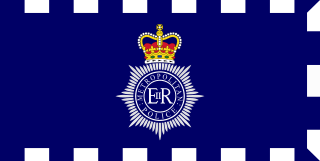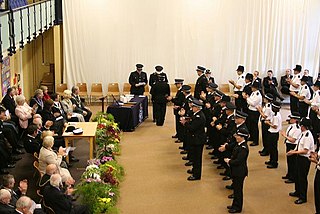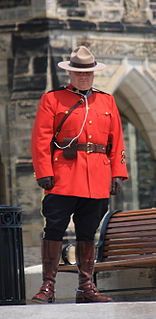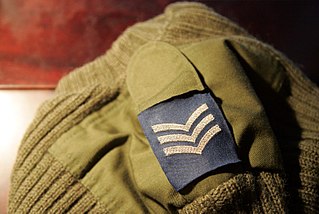Role
The ISCF members supplemented the regular force in all facets of policing including the detection and investigation of major breaches of the Road Traffic Act.
Some of their other roles included:
Security Keeping public security.
Maintaining public order.
Securing public events, rallies and holidays.
Traffic control Coordinating emergency services Police and community Handling civilian complaints.
Providing ceremonial escorts to the Governor General, the Prime minister and foreign ambassadors on state functions.
NB. The I.S.C.F. and the J.C.F had similar mandate.
History
The history of the Special Constabulary dates back as far as 1904. At that time, under the power and authority of the Constables (Special) Law of 1904, two Justices of the Peace could appoint "so many as they may think fit of the householders or other persons residing in such parish and are willing to be appointed Special Constables, to act as Special Constables for such time, and in such manner as to the said Justice".
Special Constables then were given minimal tasks to assist the Jamaica Constabulary Force (JCF), also called the Regular Force, in the preservation of peace and good order. Special Constables received no formal training and there was no hierarchical structure. They operated under the orders of the Justice of Peace who appointed them, unless or until an officer or sub-officer of the JCF was present to take command.
In 1950, a new act was constituted and passed in parliament establishing the Island Special Constabulary Force as a permanent body (Law 18 of 1950).
Training
Recruit of the Island Special Constabulary Force were trained at the Jamaica Police Academy Up park Camp, Kingston 5. Firearm and Tactical training is done at Jamaica Police Academy Twichenham Park, Spanish Town, St. Catherine. Recruits would undergo the minimum of at least 20 weeks basic training, where there will be given 2 examinations along with 12 practicals. Recruits had to be successful in examinations given in order to graduate.
The National Police College of Jamaica is a training school located in Spanish Town where force applicants undergo physical activities to ensure that they are fit for the specific jobs that they will be doing after their 6-7 months at the training school.
Students would undergo one week practicomm by visiting various stations and courts to get a knowledge of the job.
The Island Special Constabulary force had a clearly defined Basic Training Syllabus, which demands the highest level of discipline, integrity, ethics and professionalism.
A constable is a person holding a particular office, most commonly in criminal law enforcement. The office of constable can vary significantly in different jurisdictions. A constable is commonly the rank of an officer within the police. Other people may be granted powers of a constable without holding this title.

The Metropolitan Police Service (MPS), formerly and still commonly known as the Metropolitan Police and informally as the Met, Scotland Yard or "the Yard", is the territorial police force responsible for law enforcement in the Metropolitan Police District, which currently consists of the 32 London boroughs. The MPD does not include the "square mile" of the City of London, which is policed by the much smaller City of London Police.
Most of the police forces of the United Kingdom use a standardised set of ranks, with a slight variation in the most senior ranks for the Metropolitan Police Service and City of London Police. Most of the British police ranks that exist today were chosen by Home Secretary Sir Robert Peel, the founder of the Metropolitan Police, enacted under the Metropolitan Police Act of 1829. The ranks at that time were deliberately chosen so that they did not correspond with military ranking, because of fears of a paramilitary force.

The Special Constabulary is the part-time volunteer section of statutory police forces in the United Kingdom and some Crown dependencies. Its officers are known as special constables. All have only the legal powers vested of a constable no matter what rank title they hold, meaning they cannot make use of legal powers that full-time officers of rank can such as authorising a search of a property belonging to a person arrested. Thus, a Special Inspector is not a like-for-like equivalent of an Inspector in terms of the legal powers vested in the latter.

The Red Serge refers to the jacket of the dress uniform of the Royal Canadian Mounted Police. It consists of a scarlet British-style military pattern tunic, complete with a high-neck collar and blue breeches with yellow stripe identifying a cavalry history.
The Hong Kong Auxiliary Police Force was established in 1914 as the Police Reserve unit, which provides additional manpower to the Hong Kong Police Force, especially during emergencies and other incidents.

The Gurkha Contingent (GC) is a line department of the Singapore Police Force consisting primarily of Gurkhas from Nepal. Members of the GC are trained to be highly skilled and are selected for their display of strong discipline and dedication in their tasks. The principal role of the contingent is to be a special guard force, and it is currently used as a counter-terrorist force.

Hampshire Constabulary is the territorial police force responsible for policing the counties of Hampshire and the Isle of Wight in South East England.

Wiltshire Police, formerly known as Wiltshire Constabulary, is the territorial police force responsible for policing the county of Wiltshire in the south-west of England. In terms of officer numbers, it is the third smallest force in the United Kingdom but has the 20th largest geographic area to police of the 45 territorial police forces of the country.
Lists of the ranks of various police agencies and forces all around the world:

The Rajasthan Police is the law enforcement agency for the state of Rajasthan in India. The Rajasthan Police has its headquarters in Jaipur, the state capital. The motto of the force is सेवार्थ कटिबद्धता, which means "committed to serve".
The Metropolitan Special Constabulary (MSC) is the part-time volunteer police force of the Metropolitan Police Service. It is one of three Special Constabularies operating within London, the others belonging to City of London Police and British Transport Police. The service was created over 180 years' ago under the Special Constables Act of 1831 and currently consists of 1,731 officers, making it the largest in the UK.

The Royal Cayman Islands Police Service is the standing police force of the British overseas territory of the Cayman Islands. The police force was formed in 1907 and currently (2009) stands at 343 enlisted officers, with 64 civilians.

The Virginia State Police, officially the Virginia Department of State Police, is a U.S. state law enforcement agency, conceived in 1919 and established in 1932, that acts as the state police force for the Commonwealth of Virginia in the United States. The agency originated out of the Virginia Department of Motor Vehicles as an inspector and enforcer of highway laws. It is currently one of fourteen agencies within the Cabinet Secretariat of Public Safety, under the leadership of Secretary Brian Moran. On January 18, 2018, Gary T. Settle was sworn in as Superintendent of the Virginia State Police. Colonel Settle replaces retiring Colonel W. Steven Flaherty, who had served since 2003.

A shoulder mark, also called a shoulder board, rank slide, or slip-on, is a flat cloth sleeve worn on the shoulder strap of a uniform. It may bear rank or other insignia, and should not be confused with an epaulette, although the two terms are often used interchangeably.

The Singapore Police Force has employed several different styles of uniforms throughout its history. Since 1969 it has used dark blue for its uniforms, although the first police uniforms introduced in 1856 were also in the same colour.
The Jamaica Rural Police Force, popularly known as the District Constable (D.C.), is an auxiliary to the Jamaica Constabulary Force. District constables are appointed by the Commissioner of Police and attached to a particular Police Station. Their powers and authority, like the regular police, extend to all parts of the Island. Appointments of district constables are published in the Jamaica Gazette and Force Orders. Men and women can be appointed as district constables.
The State Police Services, simply known as State Police or SPS are police services under the control of respective state governments of the States and territories of India.

Law enforcement in Belize is conducted by the Belize Police Department headed by a Commissioner and headquartered in Belize City.













